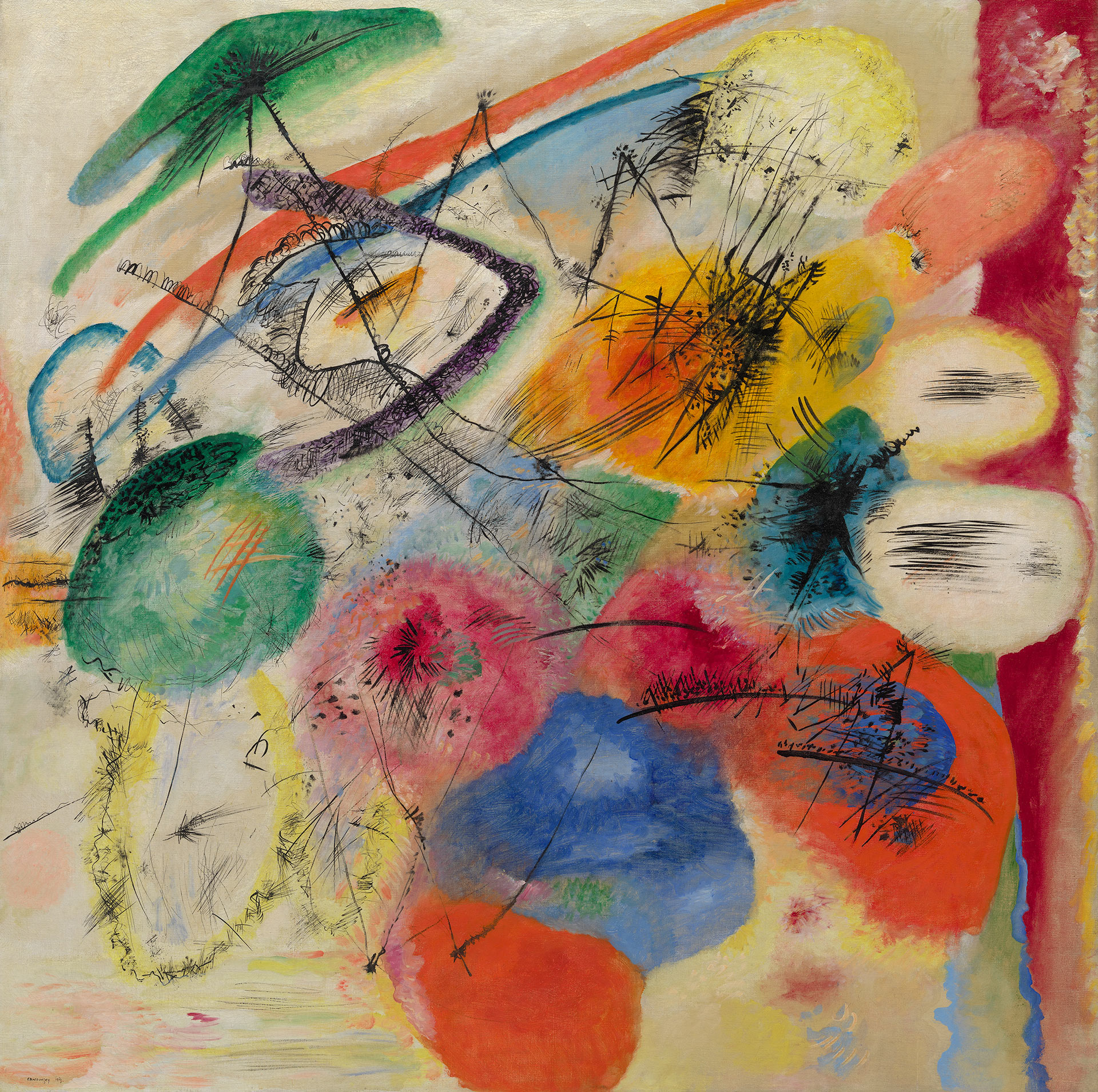
As part of the Didaktika project, the Museum designs educational areas and organizes activities to complement its exhibitions. Tools and resources are provided both in the galleries and online to increase viewers’ understanding and comprehension of the artists and works on display.

In this didactic online section you will discover certain people, places, and events that proved influential in the life and practice of Vasily Kandinsky. From his foundational years in Russia through his later, productive periods in Germany and France, Kandinsky demonstrated an intellectual curiosity and pursuit of avant-gardism. His experimental drawings, investigations of the relationship between color and sound, teaching and theoretical writings, along with a glossary of key terms, are all here to discover. See how, taken together, these inflection points contributed to his pioneering role in the development of abstract, or nonrepresentational, art in the early 20th century in Europe.
KEY TERMS
ABSTRACT ART
Also known as nonfigurative or nonobjective art, abstract art eschews representation of the real world. It was further advanced in Europe in the early decades of the 20th century. Vasily Kandinsky, one of the pioneers of abstraction, believed in art’s power to convey spirituality through an apparently free and intuitive arrangement of color and form. Other European proponents of abstract art include Hilma af Klimt, Kazimir Malevich, and Piet Mondrian.
BAUHAUS
The Bauhaus was founded in Weimar, Germany, in 1919, as a state-sponsored school of art, architecture, and design. Architect Walter Gropius served as its director until 1928. The school’s curriculum was organized on the principle that the crafts were united with the arts on an equal footing. The utopian aims of the Bauhaus included raising the quality of everyday life through the production of buildings, design objects, and artworks according to an aesthetic of modernity and universality. Anni and Josef Albers, Marianne Brandt, Walter Gropius, Gertrud Grunow, Vasily Kandinsky, Paul Klee, El Lissitzky, László Moholy-Nagy, and Oskar Schlemmer were notable teachers there. The school was located first in Weimar, then after 1925 in Dessau, and in its final years in Berlin. It was closed due to pressure from the Nazi government in 1933.
SYNESTHESIA
Estimated to affect from two to five percent of the general population, synesthesia is a neuropsychological trait in which the stimulation of one sense generates an effect in another. Grapheme-color (“grapheme” refers to letters and numbers) and music-color are the most common forms of synesthesia; others include tactile-emotion, flavor-sound, and sound-smell.
British John Locke in 1690 or German Georg T. Ludwig Sachs in 1812 are among the first persons to publish in this field.
Vasily Kandinsky
Black Lines (Schwarze Linien), December 1913 (detail)
Oil on canvas
130.5 × 131.1 cm
Solomon R. Guggenheim Museum, New York, Solomon R. Guggenheim Founding Collection, By gift 37.241
© Vasily Kandinsky, VEGAP, Bilbao 2020
